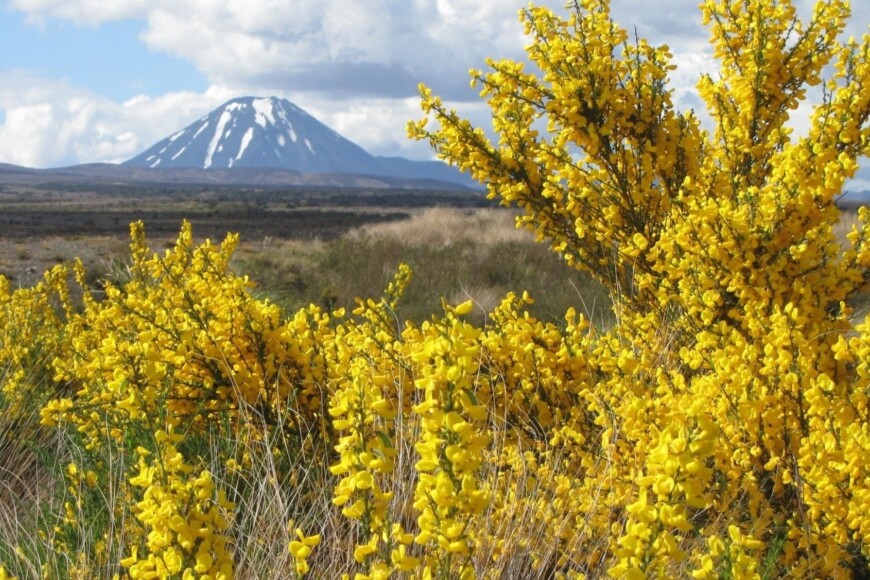In response, Project Yellow was initiated in 2014 as a collaborative biosecurity initiative. A strong collaborative framework was formalised and signatories included central government agencies (Department of Conservation and New Zealand Defence Force), local authorities (Horizons and Waikato Regional Councils), state-owned enterprises (Transpower and Genesis Energy), and iwi organisations (Lake Rotoaira Forest Trust).
To help oversee this project and assist these parties to work closely together to protect 23,000 ha of the Desert Road corridor, the Desert Road Invasive Legume Control Group was developed.

Although significant progress has been made, challenges remain. Harsh alpine conditions can limit fieldwork, and sustained community involvement is essential for long-term success. However, through remote sensing technology a breakthrough in the legume control effort has been achieved: Paul Peterson and Dr James Shepherd working together with external colleagues, including Horizons staff, have used high-resolution imagery and data analytics to transform how invasive legumes are managed across the Central Plateau.
With remote sensing now helping guide decisions and fostering efficient strategies, Project Yellow is well-positioned to meet its 2025 goal of significantly reducing invasive legume populations.
In November 2024, members of the group met to discuss submissions for a MOU (memorandum of understanding). This agreement, replacing the original version, aims to guide efforts from 2025 to 2037. The new MOU will incorporate iwi perspectives and cultural significance, welcoming Ngati Tuwharetoa and Ngati Rangi as signatories. It will also reflect findings from the remote sensing work, which highlights the need for strategic shifts in management strategies to achieve the overarching vision:
This MOU is not just about preserving the Desert Road; it is also setting a standard for innovative and collaborative biosecurity efforts across New Zealand. With the New Zealand Defence Force and the Department of Conservation poised to adopt weed control strategies inspired by this remote sensing work, the impact extends far beyond its original scope, helping to ensure that the Desert Road’s alpine vistas and unique ecosystems endure for future generations.
Key contact

